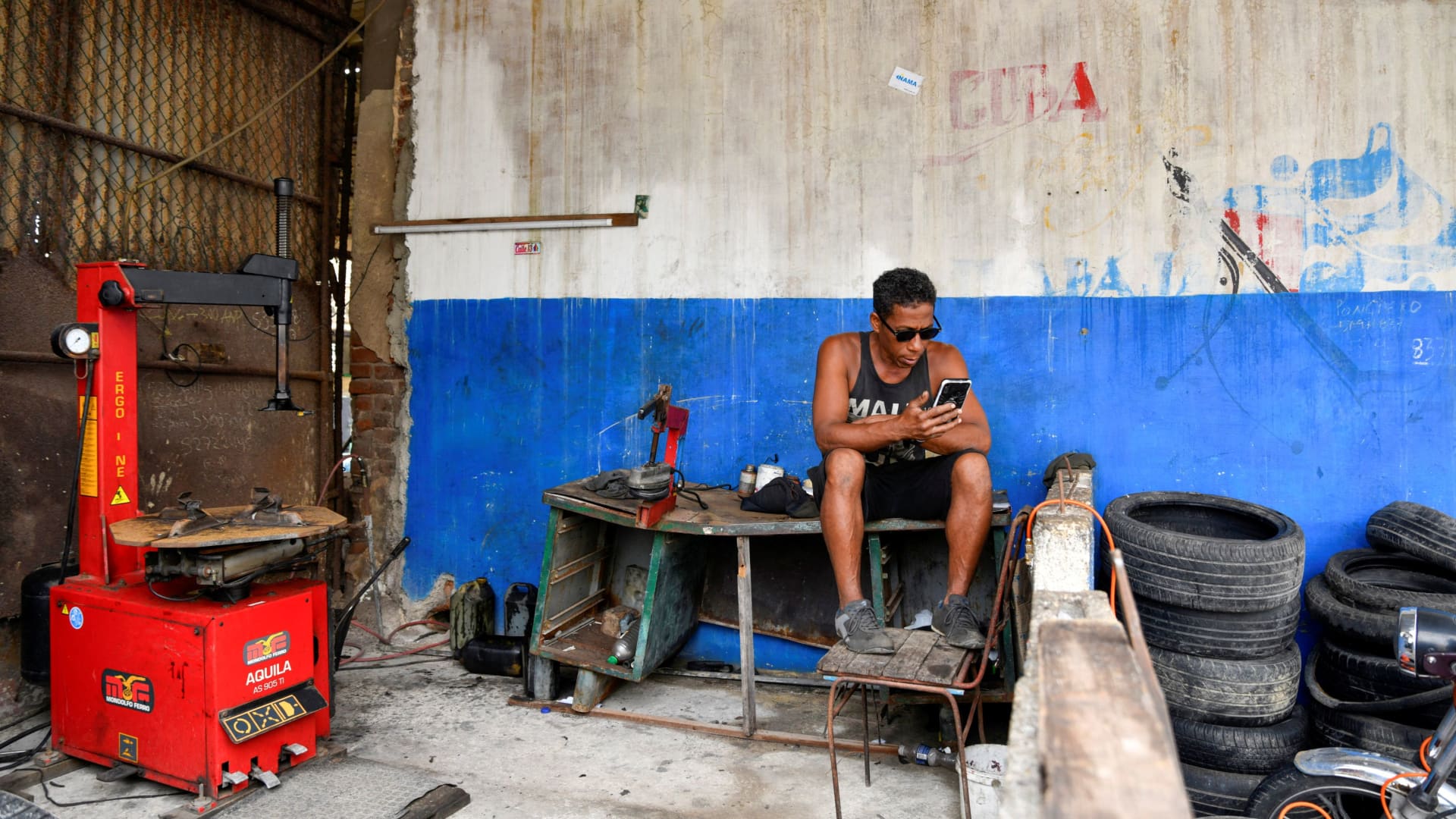HAVANA — Millions remained without power in Cuba for a third consecutive day as slow progress is made in restoring electricity following multiple major grid failures.
Power is expected to be restored to everyone on the island by Tuesday, the minister of energy and mines, Vicente de la O Levi, told reporters at a news conference Sunday. The announcement, however, came before the Energy and Mines Ministry reported a fourth grid failure.
Levi warned that even with the power restored, “we will continue to have blackouts because we continue with the lack of fuel.” He said the government is “in conversations” to acquire fuel.
Hurricane Oscar, a Category 1 storm, made landfall on eastern Cuba’s northern coast Sunday evening with sustained winds of 80 mph. The storm could put an end to the power recovery efforts if it affects the plants in its path.
Levi blamed the U.S.’ “brutal blockade” for the financial difficulties in acquiring fuel and spare parts for Cuba’s power plants, as well as for the current electric power crisis. Cuban President Miguel Díaz-Canel and other top leaders have also blamed the U.S. embargo on Cuba.
Cuba’s electric grid collapsed Friday morning, plunging the entire population of 10 million into darkness. As technicians slowly made progress with repairs, a second grid collapse occurred early Saturday, followed by another one late Saturday, as well as the collapse Sunday.
Colombia, Mexico, Venezuela and Russia have offered help, according to Levi, and Cuba remains in communication with their governments.
“The Cuban government has not requested assistance at this time,” a U.S. State Department spokesperson told NBC News in an emailed statement.
“The Unites States obviously is not to blame for today’s blackout on the island, or the overall energy situation in Cuba,” the statement said.
In the statement, the spokesperson blamed Cuba’s economic conditions on “long-term mismanagement of its economic policy and resources,” adding that they have “increased hardships” on the Cuban population.
The spokesperson added that the U.S. “is closely monitoring today’s blackout on the island, and we are concerned about the potential humanitarian impacts on the Cuban people.”
Some protests, or “cacerolazos,” broke out in different parts of the island Saturday night, with people demonstrating by banging on pots. Levi said the protests were “isolated incidences” and called them “incorrect” and “indecent.” Protesting is rare and not usually tolerated in Cuba.
“The people and culture of Cuba are not accustomed to that,” he said about the protests.
In the capital, Havana, with a population of 2 million, power had been restored to 260,000 homes at 3:30 p.m. local time, according to the state-run news site Cuba Debate. But some residents whose power was connected said it was a short while before they lost power again.
Blackouts have been chronic in Cuba for years and have worsened in recent months. The communist-run country’s aging and crumbling infrastructure requires constant maintenance.
In the past, Cuba’s government has cited increasing energy demand and shortages of fuel used to power its plants as causes of constant blackouts. In some provinces outside Havana, many people have grappled with power outages that last up to 20 hours a day.
The supply of oil has been greatly limited since Cuba’s ally and main oil supplier, Venezuela, decreased the shipments it sends to the island. Other countries that have supplied oil in the past, like Russia and Mexico, have also diminished shipments.
Cuba has been in an economic crisis spurred by tightened U.S. sanctions during former President Donald Trump’s administration and the devastating effects the pandemic had on tourism on the island, one of the most lucrative sources of revenue for the government.
The state-dominated economy relies mostly on imports, and with the lack of hard currency, Cubans have been dealing with shortages of food, medicine, water and fuel.
Cuba’s economic crisis has spurred massive migration. Over 1 million people, or 10% of the population, fled the island from 2022 to 2023, according to the country’s national statistics office.
Orlando Matos reported from Havana and Carmen Sesin from Miami.




































































































































































You must be logged in to post a comment Login